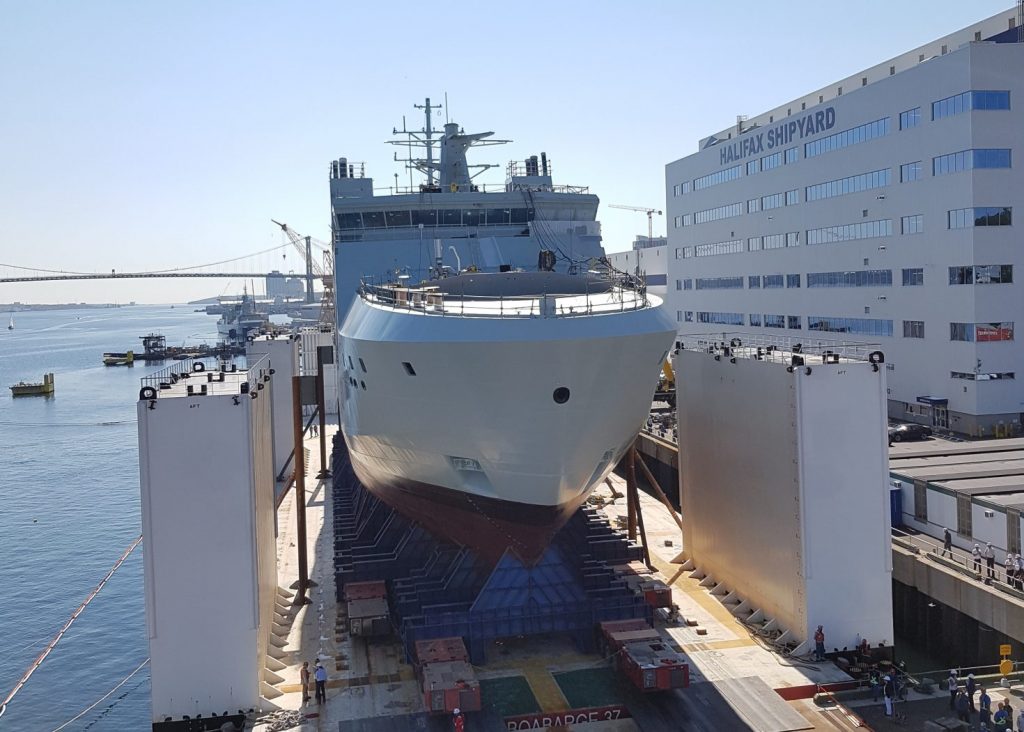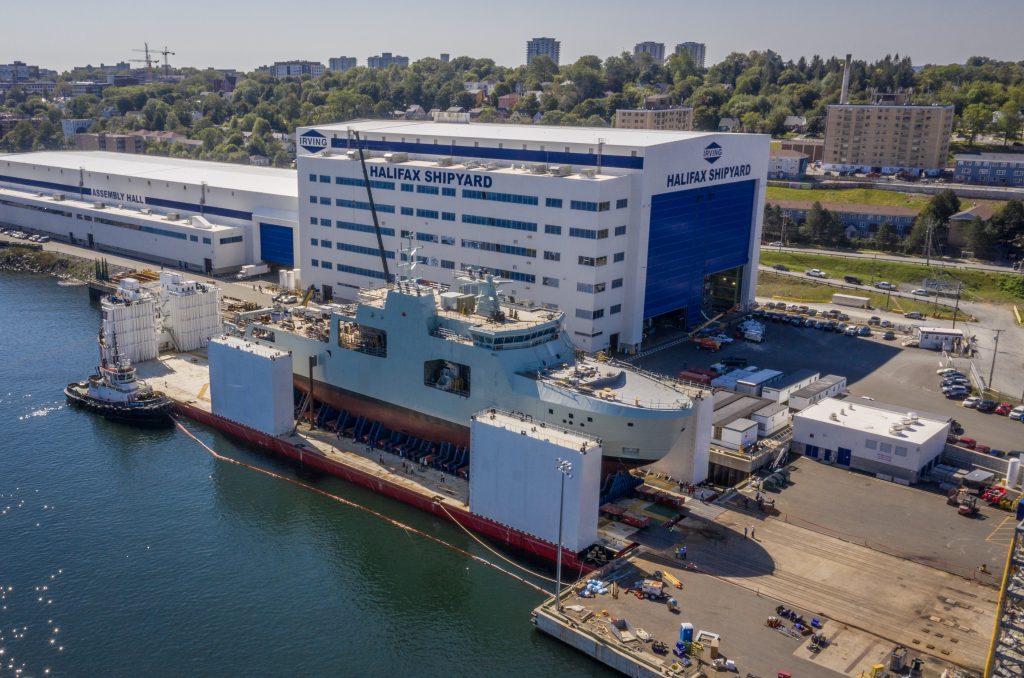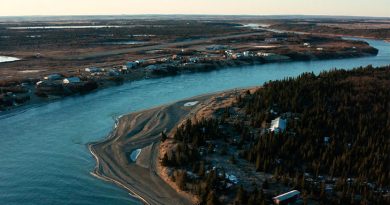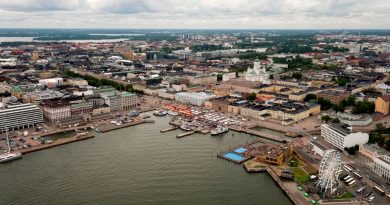Canada’s first Arctic and Offshore Patrol Ship to be launched Saturday

Shipbuilders at Halifax Shipyard are set to launch Canada’s first Arctic and Offshore Patrol Ship (AOPS) on Saturday to get it ready for sea trials next year.
On Friday, the shipbuilders successfully moved the future HMCS Harry DeWolf, one of six ice-strengthened patrol vessels being built for the Royal Canadian Navy, onto a submersible barge for the vessel’s planned launch tomorrow, Irving Shipbuilding said in a press release.
Weather permitting, the barge carrying the 103-metre, 6,615-tonne vessel is scheduled to be towed from Halifax Shipyard’s Pier 6 to a launch site in Bedford Basin in Halifax Harbour. There the barge will be gradually submerged in a controlled manner over many hours and the future HMCS Harry DeWolf will float off, said Sean Lewis, a spokesman for Irving Shipbuilding.
The shipbuilding company is asking the public to stay a safe distance from the launch site of no less than 500 metres, and reduce speed to minimize waves.
Following the launch, the future HMCS Harry DeWolf will be towed by tug boats to Halifax Shipyard where shipbuilders will continue working to prepare the ship for sea trials in 2019, Lewis said.

HMCS Harry DeWolf is scheduled to be delivered to the Royal Canadian Navy in summer 2019.
The AOPS are not expected to be “complex combatant” ships, they will be armed and equipped for a constabulary role in support of various government departments. They will mostly be responsible for surveillance in the Arctic, as well as Atlantic and Pacific oceans, providing the navy situational awareness, and cooperating with other agencies to enforce Canadian sovereignty in the rapidly changing Arctic.
In terms of their offensive and ice capabilities, they are a far cry from an armed icebreaker, but will at the same time have more maneuverability and flexibility.
Able to embark a Cyclone helicopter, small vehicles, snowmobiles, and deployable boats, the Harry DeWolf-class patrol vessels will be #WellEquipped to patrol icy seas, extending the reach of #CAF in the Arctic and abroad! pic.twitter.com/L36ysWVeYu
— Canadian Forces (@CanadianForces) September 14, 2018
When the program was announced by the previous Conservative government almost a decade ago, the ships where expected to cost Canadian taxpayers $3.1 billion. Another $4.3 billion was budgeted for the ships’ maintenance and operation.
Halifax Shipyard currently has three AOPS vessels under construction in different stages and expects to begin the construction of the fourth ship by the end of the year, Lewis said.
“Right now the contract is for six ships and we’re hopeful for more if possible,” Lewis said.
Following the Arctic and Offshore Patrol Ship programme Irving Shipbuilding will be building the next generation of Canadian Surface Combatant Ships that will replace the RNC’s current fleet of frigates, Lewis added.
Related stories from around the North:
Canada: Surveillance and search and rescue top Canada’s Arctic defence priorities, Radio Canada International
Canada: Canada orders seven Arctic offshore patrol ships from Irving Shipbuilding, Blog: Mia Bennett
Finland: Finnish Air force to take part in joint Finnish-Swedish-US military exercises, Yle News
Norway: Russia’s Northern Fleet takes on key role in search and rescue exercise with Norway, The Independent Barents Observer
Russia: Population growth in military towns of Kola Peninsula, Russia, The Independent Barents Observer
Sweden: Sweden’s Prime Minister reaffirms commitment to country’s defense, Radio Sweden
United States: Here’s what’s in the U.S. Defense Department’s new Arctic strategy, Alaska Dispatch News



